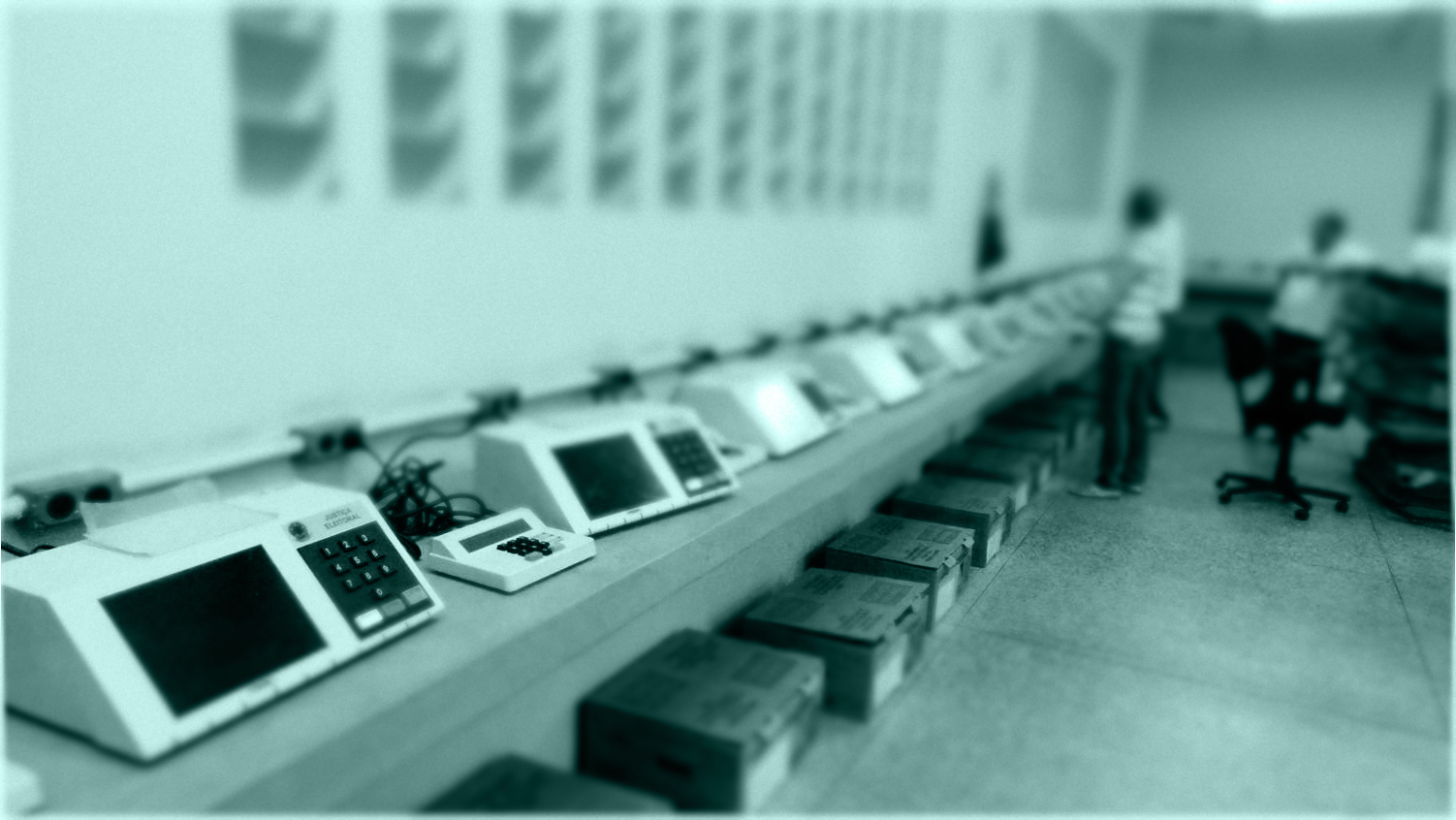In the October 2014 Brazilian Elections, across 5,570 municipalities, 450,000 polling stations and approximately 530,000 electronic voting machines will be used. Electronic voting in Brasil was first trialled in the state of Santa Catarina in 1996, and since 2000, all Brazilian elections have been fully electronic.
With voting compulsory (although blank votes are permitted), at general elections voters must select Presidential candidates, Senators, Federal Deputies and State Governors simultaneously which can appear complex to outsiders, and as a sign of a young, highly-engaged democracy, voters will carefully deliberate until polling day before making their final decision.
The machines helped make the electoral process of across the many different realities of Brasil far more coherent.
The primary design goal of the voting machine was extreme simplicity, with the model being a public phone booth, and the patented design is now being used in various countries around the world while also providing the benchmark for other countries development of their own systems.
The Brazilian voting machine accomplishes three steps (voter identification, secure voting and tallying) in a single process, eliminating fraud based on forged or falsified public documents. Political parties have access to the voting machine’s programs before the election for auditing.
The measures to prevent electoral fraud or misuse of the machines are complex and thorough:
On the eve of an election, the election authorities in each State select a number of voting machines by lot (all available voting machines take part in that lot, identified by their serial number), and those machines so selected, instead of being used in actual pooling stations, are retained in the seat of the State’s Regional Electoral Court for a “parallel voting”, conducted for audit purposes in the presence of representatives designated by the political parties. The audit vote takes place on the same date as the election. This parallel voting is a mock election but the votes entered in the voting machine are not secret, instead they are witnessed by all party representatives present at the audit process. The whole audit is filmed, and the representatives of the political parties present for the audit direct publicly that a random quantity of votes are to be inserted in the machine for each candidate. A tally is kept of the instructions received from each party representative. Each party representative orders a number of votes to be inserted at the machine, but he only reveals that number, and the recipients, during the audit. So, the numbers are not previously known, because the only way they could be known by others is if there were a collusion between rival parties. At the end of the process, then, when all the parties have directed that certain number of votes then chosen are to be registered for each candidate in the audit vote, the votes ordered to be inserted by each party representative for each candidate are added up, and the total number of votes of the mock election is known, as well as the total number of votes of each candidate. Once the mock votes end and the profile of the vote is known, the electronic counting of the votes contained in the voting machines used during the audit takes place. The result indicated by the voting machines software has to correspond to the previously known result. As the machines were selected at random by lot, if the result given by the software corresponds to the previously known result resulting from the sum of the parties’s public instructions (which has happened in all elections so far), the system is deemed by the election authorities as reliable for receiving, properly registering and accurately tallying the votes. Given that the machines are chosen at random, the reliability of the chosen ones is deemed to represent the reliability of the others. If the audit failed to produce a positive result (the matching of the votes counted to the sum of the instructions), then the whole election in the State in question would be void.
As with any e-voting system, fear of abuse exists, as does demand for printed receipts, and although potential vulnerabilities have been indicated, no case of fraud has been discovered.
This voting system has been embraced because it speeds up the vote count tremendously. In the 1989 presidential election between Fernando Collor de Mello and Luiz Inácio Lula da Silva, the count required nine days. Fast-forward to the 2002 general election, where Lula da Silva won, the count required less than 12 hours and in some smaller towns the election results are known a matter of minutes after the closing of the ballots.
Considered the best in the world, Brasil’s electronic voting system’s principal strength is that society believes in it, and having experienced their democracy taken away within living memory, Brazilians take their elections very seriously.
[qpp]

